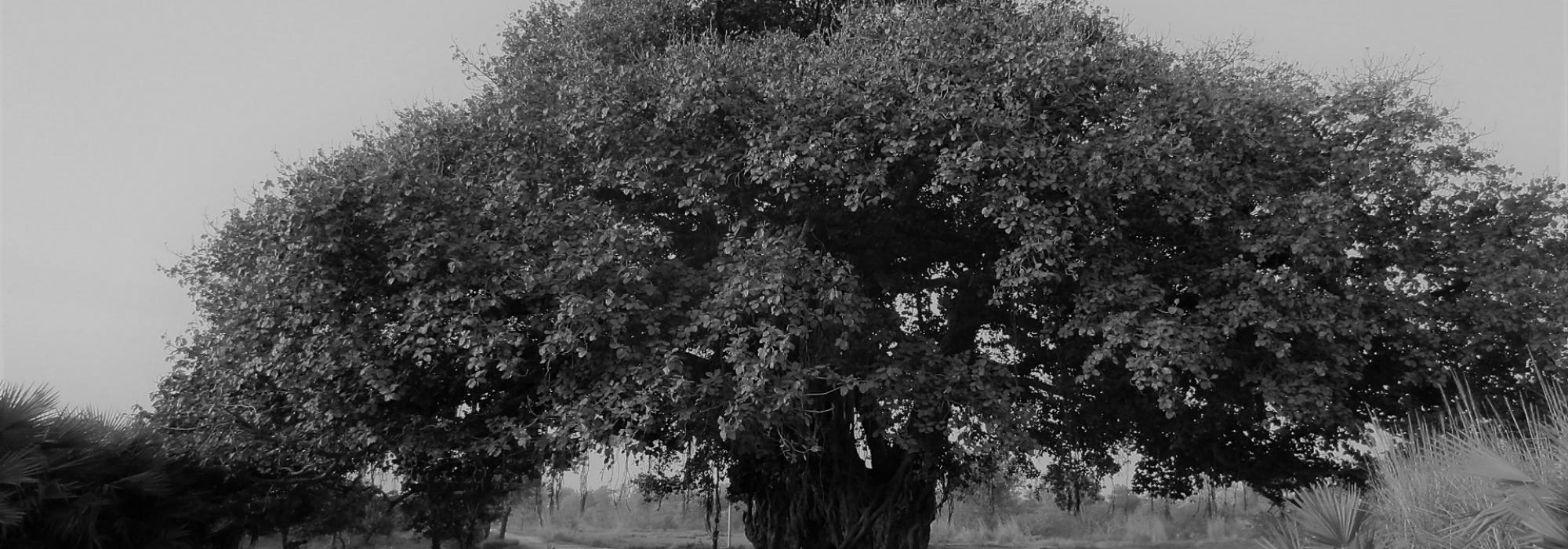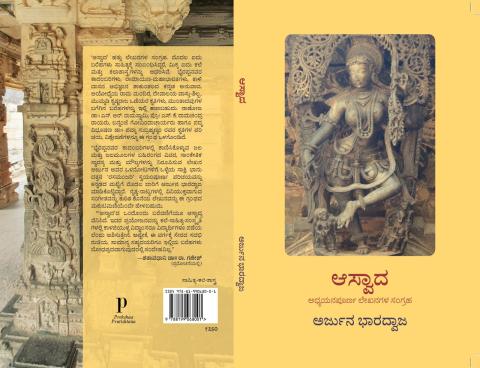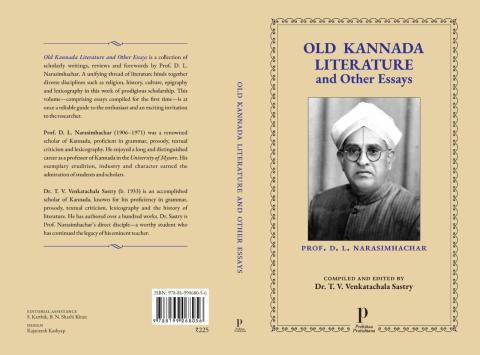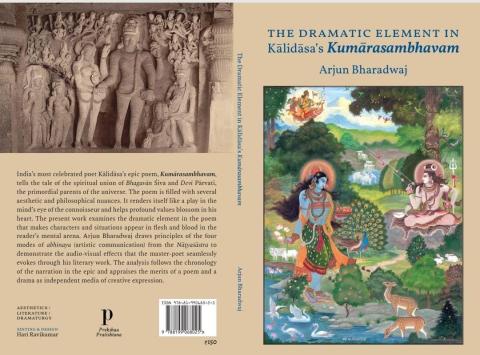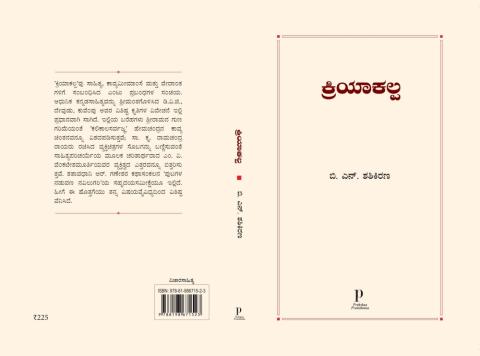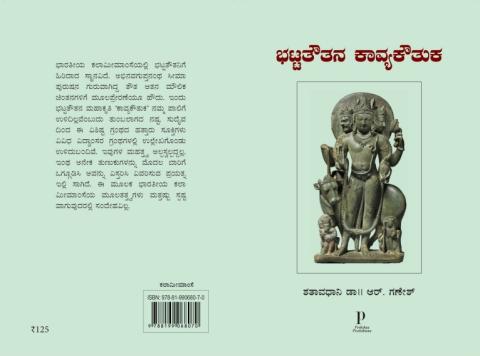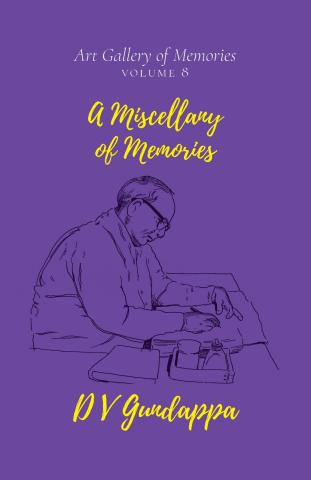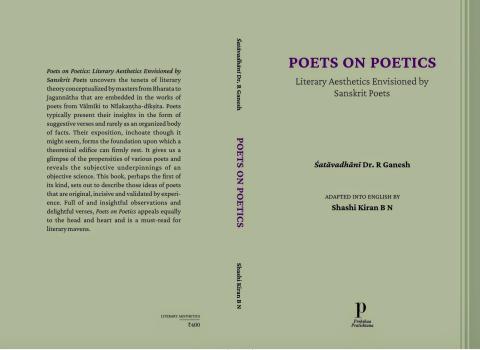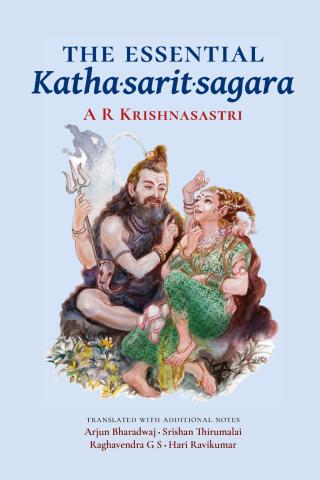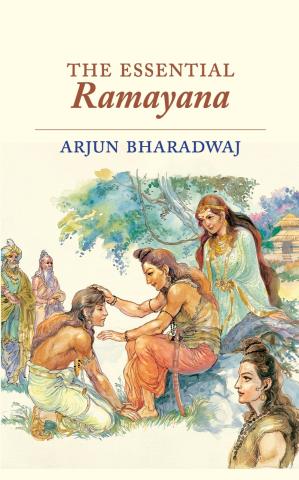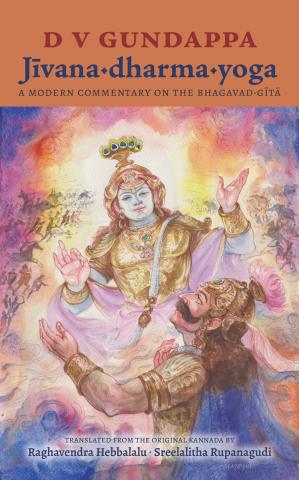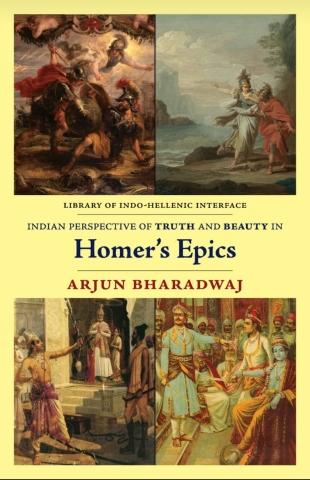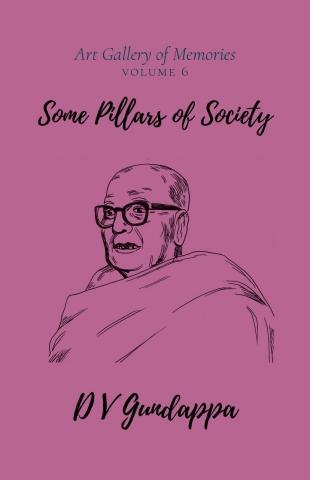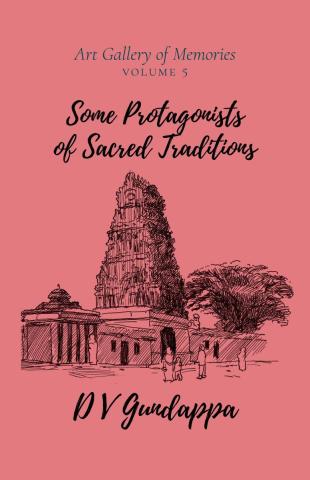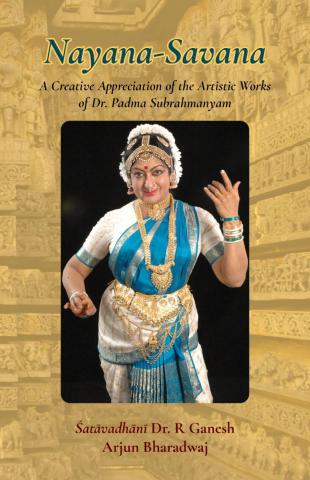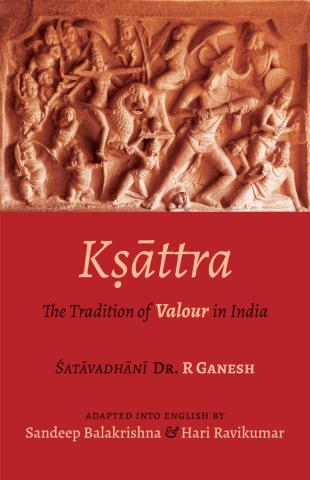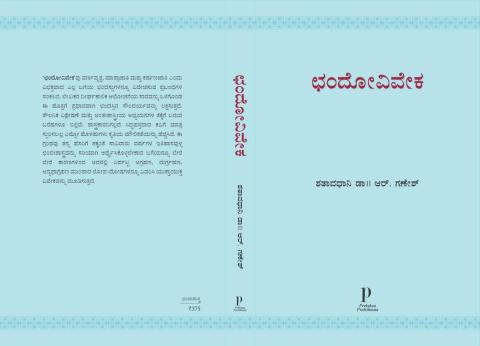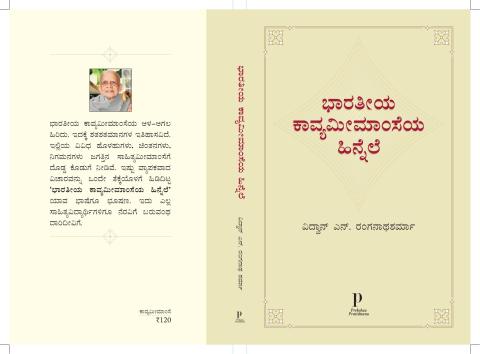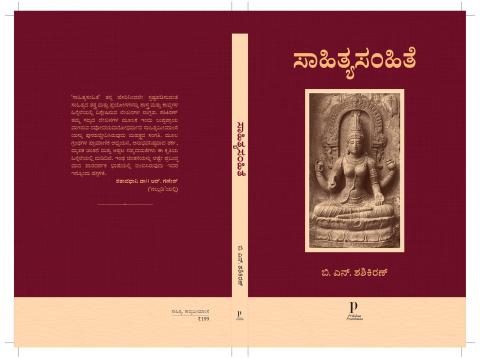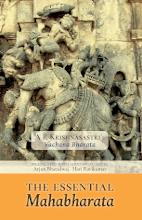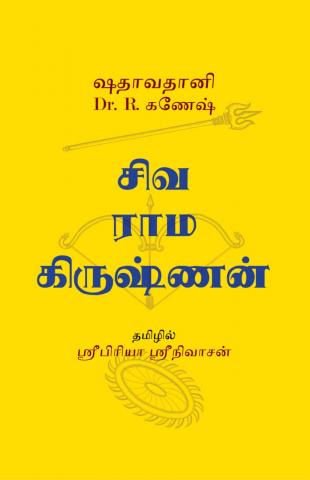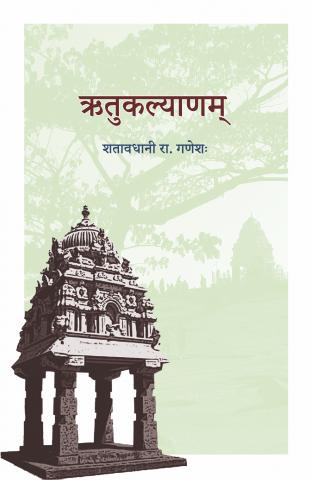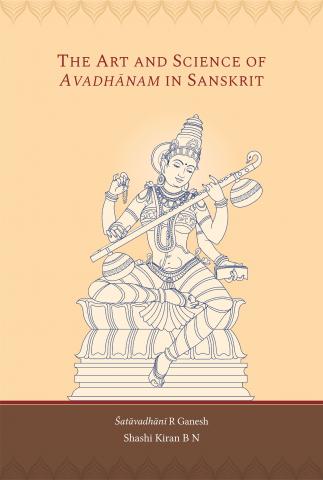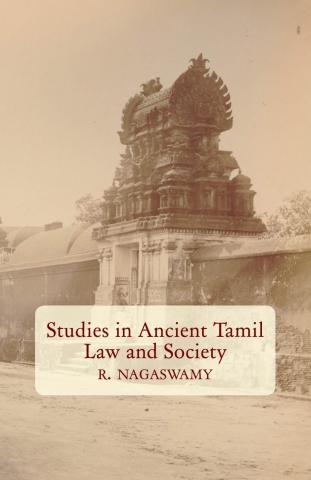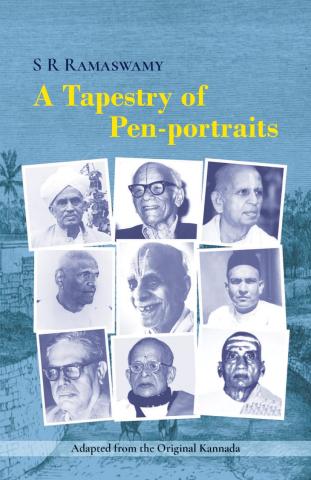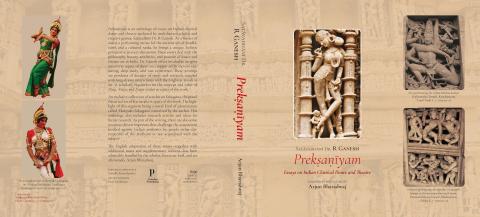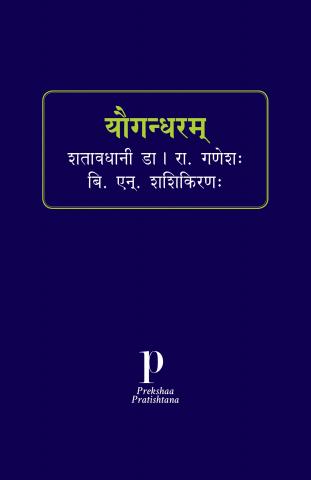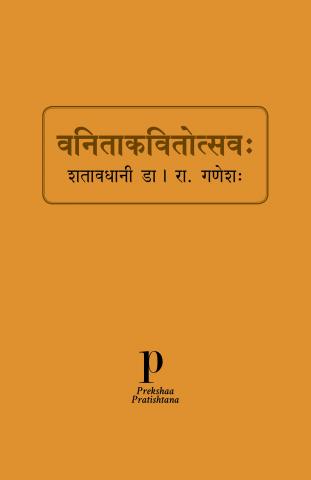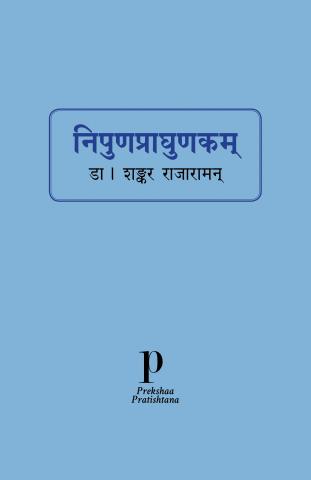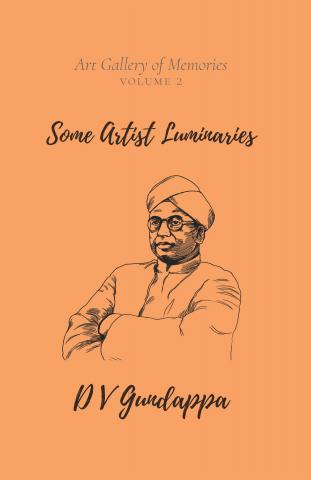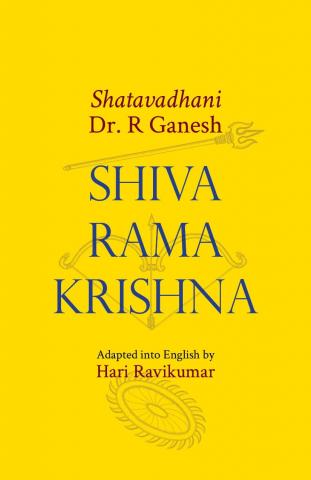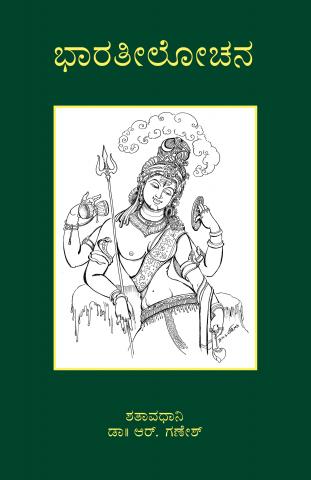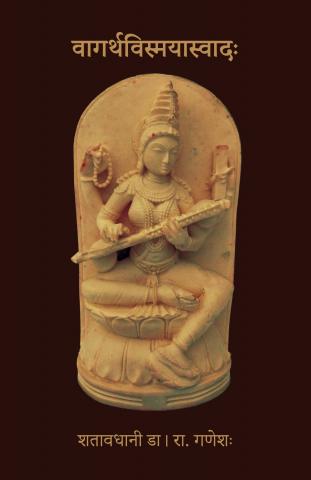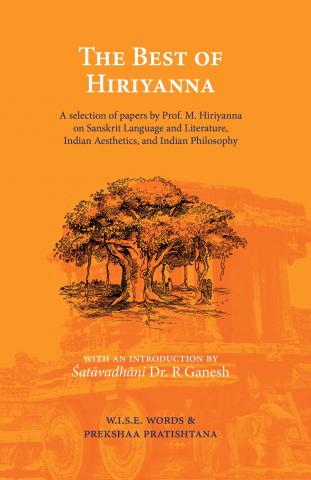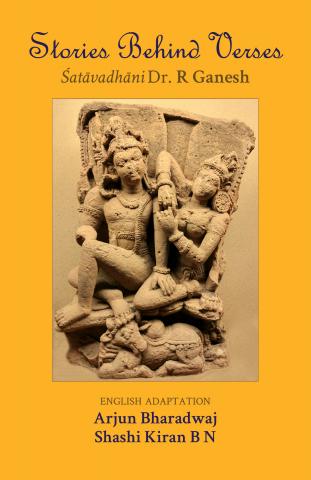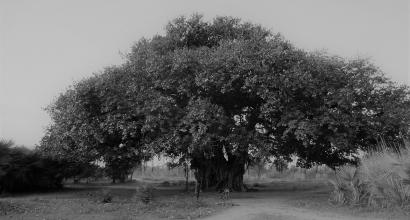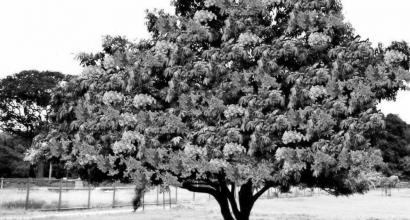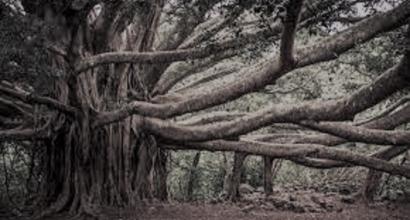ಕಾಳಿದಾಸನ ಎರಡು ಮಹಾಕಾವ್ಯಗಳಲ್ಲಿಯೂ ಅವನಿಗಿದ್ದ ಸಸ್ಯಪ್ರೇಮದ ಭಾವಗಳು ಹೃದಯಂಗಮವಾಗಿ ಒಡಮೂಡಿವೆ. ‘ಕುಮಾರಸಂಭವ’ದಲ್ಲಿ ಪಾರ್ವತಿಯು ತಪೋದೀಕ್ಷೆಯನ್ನು ತಾಳಿದಾಗ ತನ್ನ ತನುವಿನ ಒನಪು-ಒಯ್ಯಾರಗಳನ್ನು ಬಳ್ಳಿಗಳಲ್ಲಿ ಒತ್ತೆಯಿಟ್ಟಳೆಂದು ಕವಿಯು ಹೇಳುವಾಗ ಅವನ ಮಾತುಗಳಲ್ಲಿರುವುದು ಪಾರ್ವತಿಯ ಒಡಲು ಬಳ್ಳಿಯಂತೆ ಬಳುಕುವುದೆಂಬ ಸೀಮಿತಾರ್ಥದ ಚಮತ್ಕಾರ ಮಾತ್ರವಲ್ಲ, ಅವಳಿಗೂ ಗಿಡ-ಬಳ್ಳಿಗಳಿಗೂ ಸಾಜಾತ್ಯವಿದೆಯೆಂಬ ಅನುಬಂಧವೇ ಪ್ರಧಾನ ಮತ್ತು ರಸಸ್ಫೋರಕವೆಂಬ ದಿವ್ಯಧ್ವನಿ: “ಪುನರ್ಗ್ರಹೀತುಂ ನಿಯಮಸ್ಥಯಾ ತಯಾ ... ನಿಕ್ಷೇಪ ಇವಾರ್ಪಿತಂ ಲತಾಸು ತನ್ವೀಷು ವಿಲಾಸಚೇಷ್ಟಿತಂ ...” (೫.೧೩).
ಈ ಬಗೆಯ ಕಠಿನ ತಪೋವಿಧಿಯಲ್ಲಿ ತೊಡಗಿರುವಾಗಲೂ ಪಾರ್ವತಿಯು ತಾನೇ ನೆಟ್ಟು ಬೆಳಸಿದ ಮರ-ಗಿಡಗಳಿಗೆ ನೀರೆರೆದು ಪೋಷಣೆ ನೀಡುವುದನ್ನು ಮರೆಯಲಿಲ್ಲ. ಮುಂದೆ ಆಕೆಯ ಮಗನಾದ ಸ್ಕಂದನಿಗೂ ಇವುಗಳು ಗಳಿಸಿದ ಪುತ್ರಪ್ರೀತಿಯನ್ನು ಮೀರಲಾಗಲಿಲ್ಲವೆಂದು ಕವಿಕುಲಗುರು ಒಕ್ಕಣಿಸಿದ್ದಾನೆ:
ಅತಂದ್ರಿತಾ ಸಾ ಸ್ವಯಮೇವ ವೃಕ್ಷಕಾನ್
ಘಟಸ್ತನಪ್ರಸ್ರವಣೈರ್ವ್ಯವರ್ಧಯತ್ |
ಗುಹೋಽಪಿ ಯೇಷಾಂ ಪ್ರಥಮಾಪ್ತಜನ್ಮನಾಂ
ನ ಪುತ್ರವಾತ್ಸಲ್ಯಮಪಾಕರಿಷ್ಯತಿ || (೫.೧೪)
ಇದನ್ನು ಈ ಮುನ್ನ ನಾವು ಕಂಡ ‘ಶಾಕುಂತಲ’ದ ಮಾತುಗಳೊಡನೆ ಹೋಲಿಸಬಹುದು. ಮುಂದೆ ‘ರಘುವಂಶ’ದಲ್ಲಿ ಸೀತೆ ಇಂಥದ್ದೇ ಕಾಯಕವನ್ನು ಕೈಗೊಳ್ಳುವ ಮೂಲಕ ತಾಯ್ತನಕ್ಕೆ ಮುನ್ನವೇ ಮಕ್ಕಳಿಗೆ ಹಾಲೂಡಿಸುವ ದಿವ್ಯಾನುಭೂತಿಯನ್ನು ಪಡೆಯಬೇಕೆಂದು ವಾಲ್ಮೀಕಿಮುನಿಗಳು ಆಕೆಗೆ ಹೇಳುವ ಸಂದರ್ಭವನ್ನು ನಾವು ನೋಡುತ್ತೇವೆ:
ಪಯೋಘಟೈರಾಶ್ರಮಬಾಲವೃಕ್ಷಾನ್
ಸಂವರ್ಧಯಂತೀ ಸ್ವಬಲಾನುರೂಪೈಃ |
ಅಸಂಶಯಂ ಪ್ರಾಕ್ತನಯೋಪಪತ್ತೇಃ
ಸ್ತನಂಧಯಪ್ರೀತಿಮವಾಪ್ಸ್ಯಸಿ ತ್ವಮ್ || (೧೪.೭೮)
ಅಷ್ಟೇಕೆ, ಈ ಕಾವ್ಯದಲ್ಲಿ ಮತ್ತೂ ಮೊದಲಿಗೆ ಬರುವ ಶ್ಲೋಕವೊಂದು ‘ಕುಮಾರಸಂಭವ’ದ ಪ್ರಕೃತ ಪದ್ಯಕ್ಕೆ ನೇರವಾಗಿ ಸಂವಾದಿ. ಅಲ್ಲಿ ಹಿಮಾಲಯದ ತಪ್ಪಲಿನ ದೇವದಾರುದ್ರುಮವೊಂದನ್ನು ಪಾರ್ವತಿಯು ತನ್ನ ಎದೆಹಾಲನ್ನು ಉಣಿಸಿಯೇ ಸ್ಕಂದನಿಗೆ ಸರಿಸಾಟಿಯಾಗಿ ಬೆಳಸಿದ್ದಳೆಂಬ ಮಾತು ಬರುತ್ತದೆ. ಶಿವ-ಶಿವೆಯರಿಬ್ಬರೂ ಈ ಮರವನ್ನು ಮಗನೆಂಬಂತೆ ಪರಿಗಣಿಸಿದ ಮಾತೂ ಇದೆ. ಇಂಥ ತರುವು ಅದೊಮ್ಮೆ ಕಾಡಾನೆಯ ತಿಕ್ಕಾಟದಲ್ಲಿ ತನ್ನ ತೊಗಟೆಯನ್ನು ಕಳೆದುಕೊಂಡಾಗ ದೇವಾಸುರಸಂಗ್ರಾಮದಲ್ಲಿ ಗಾಯಗೊಂಡ ಕುಮಾರಸ್ವಾಮಿಯನ್ನು ಕಂಡಷ್ಟೇ ವೇದನೆ ಗಿರಿಜೆಗಾಯಿತೆಂಬ ಒಕ್ಕಣೆಯೂ ಇದೆ. ಜೊತೆಗೆ ಇಂಥ ಮರವನ್ನು ವನ್ಯಜೀವಿಗಳ ಆಕ್ರಮಣದಿಂದ ಕಾಪಾಡಲು ಕುಂಭೋಧರ ಎಂಬ ಹೆಸರಿನ ಸಿಂಹರೂಪದ ಶಿವಾನುಚರನನ್ನೇ ನಿಯಮಿಸಿದ ಸಂಗತಿಯೂ ಬರುತ್ತದೆ:
ಅಮುಂ ಪುರಃ ಪಶ್ಯಸಿ ದೇವದಾರುಂ
ಪುತ್ರೀಕೃತೋಽಸೌ ವೃಷಭಧ್ವಜೇನ |
ಯೋ ಹೇಮಕುಂಭಸ್ತನನಿಃಸೃತಾನಾಂ
ಸ್ಕಂದಸ್ಯ ಮಾತುಃ ಪಯಸಾಂ ರಸಜ್ಞಃ || (೨.೩೬)
ಕಂಡೂಯಮಾನೇನ ಕಟಂ ಕದಾಚಿ-
ದ್ವನ್ಯದ್ವಿಪೇನೋನ್ಮಥಿತಾ ತ್ವಗಸ್ಯ |
ಅಥೈನಮದ್ರೇಸ್ತನಯಾ ಶುಶೋಚ
ಸೇನಾನ್ಯಮಾಲೀಢಮಿವಾಸುರಾಸ್ತ್ರೈಃ || (೨.೩೭)
ತದಾಪ್ರಭೃತ್ಯೇವ ವನದ್ವಿಪಾನಾಂ
ತ್ರಾಸಾರ್ಥಮಸ್ಮಿನ್ನಹಮದ್ರಿಕುಕ್ಷೌ |
ವ್ಯಾಪಾರಿತಃ ಶೂಲಭೃತಾ ವಿಧಾಯ
ಸಿಂಹತ್ವಮಂಕಾಗತಸತ್ತ್ವವೃತ್ತಿ || (೨.೩೮)
ಮರ-ಗಿಡಗಳನ್ನು ಮಕ್ಕಳಂತೆ ಕಾಣಬೇಕೆಂಬ ತುಡಿತ ಕಾಳಿದಾಸನಲ್ಲಿ ಹತ್ತಾರು ಬಾರಿ ಮೂಡಿದೆ. ಇದಕ್ಕೆ ‘ಮೇಘದೂತ’ದಿಂದ ಮೊದಲ್ಗೊಂಡು ಹಲವು ಕೃತಿಗಳಲ್ಲಿ ಸಾಕ್ಷ್ಯಗಳನ್ನು ಕಾಣುತ್ತಿದ್ದೇವೆ. ಅವುಗಳ ಪೈಕಿ ‘ರಘುವಂಶ’ದಲ್ಲಿ ಬರುವ ಮತ್ತೂ ಒಂದು ಮಾತನ್ನು ಗಮನಿಸಬಹುದು. ವಿಮಾನದ ಮೂಲಕ ಲಂಕೆಯಿಂದ ಅಯೋಧ್ಯೆಗೆ ಬರುತ್ತಿದ್ದಾಗ ಶ್ರೀರಾಮನು ಸೀತೆಗೆ ಅವಳು ಪಂಚವಟಿಯಲ್ಲಿ ಅಕ್ಕರೆಯಿಂದ ನೀರೆರೆದು ಬೆಳಸಿದ ಮಾವಿನ ಮರವನ್ನು ತೋರಿಸುತ್ತಾನೆ (ಅವಳು ಪ್ರೇಮದಿಂದ ಸಾಕಿದ ಜಿಂಕೆಯ ಪ್ರಸ್ತಾವವೂ ಬರುತ್ತದೆ):
ಏಷಾ ತ್ವಯಾ ಪೇಶಲಮಧ್ಯಯಾಪಿ
ಘಟಾಂಬುಸಂವರ್ಧಿತಬಾಲಚೂತಾ |
ಆನಂದಯತ್ಯುನ್ಮುಖಕೃಷ್ಣಸಾರಾ
ದೃಷ್ಟಾ ಚಿರಾತ್ಪಂಚವಟೀ ಮನೋ ಮೇ || (೧೩.೩೪)
ಹೀಗೆ ಸೀತಾರಾಮರ ಒಲುಮೆಯಿಂದ ಬೆಳೆದ ತರು-ಲತೆಗಳು ಅವುಗಳಾಗಿದ್ದ ಕಾರಣ ರಾವಣಾಪಹೃತೆಯಾದ ಸೀತೆಯನ್ನು ಕಾಣದೆ ಕಳವಳಿಸುತ್ತಿದ್ದ ರಾಮನಿಗೆ ಅವಳ ಜಾಡನ್ನು ತೋರಿಸುವಂತೆ - ತಮಗೆ ಮಾತು ಬಾರದೆ ಇದ್ದರೂ – ರಾವಣನಿದ್ದ ಲಂಕೆಯ ದಿಕ್ಕಿಗೆ ತಮ್ಮ ಕೊಂಬೆ-ರೆಂಬೆಗಳನ್ನು ಚಾಚಿದುವಂತೆ!
ತ್ವಂ ರಕ್ಷಸಾ ಭೀರು ಯತೋಽಪನೀತಾ
ತಂ ಮಾರ್ಗಮೇತಾಃ ಕೃಪಯಾ ಲತಾ ಮೇ |
ಅದರ್ಶಯನ್ ವಕ್ತುಮಶಕ್ನುವತ್ಯಃ
ಶಾಖಾಭಿರಾವರ್ಜಿತಪಲ್ಲವಾಭಿಃ || (೧೩.೨೪)
ಮುಂದೆ ಶ್ರೀರಾಮನು ಸೀತೆಗೆ ಶರಭಂಗಮಹರ್ಷಿಯ ಆಶ್ರಮವನ್ನು ವಿಮಾನದಿಂದಲೇ ತೋರಿಸುತ್ತಾನೆ. ತಾವು ಹಿಂದೆ ಆತನ ಬಳಿಗೆ ಬಂದಾಗ ಇವರನ್ನು ಕಾಣಲೆಂದೇ ಆವರೆಗೆ ಬದುಕಿದ್ದ ಆ ಮುನಿಯು ತಾನಿನ್ನು ಕೃತಾರ್ಥನಾದೆನೆಂದು ಅಗ್ನಿಪ್ರವೇಶ ಮಾಡಿ ಪುಣ್ಯಲೋಕಗಳಿಗೆ ತೆರಳಿರುತ್ತಾನೆ. ಆದರೆ ಮಹಾನುಭಾವ ಶರಭಂಗನು ಬದುಕಿದ್ದಾಗ ತನ್ನ ಸುತ್ತಮುತ್ತಣ ಗಿಡ-ಮರಗಳನ್ನು ಪ್ರೀತಿಯಿಂದ ಬೆಳಸಿದ್ದ ಕಾರಣ ಇದೀಗ ಆತನ ಅನುಪಸ್ಥಿತಿಯಲ್ಲಿಯೂ ಅವುಗಳು ಆ ಮಹರ್ಷಿಯ ಮಕ್ಕಳಂತೆ ಆಶ್ರಮಕ್ಕೆ ಬಂದ ಅತಿಥಿಗಳನ್ನು ಸ್ವಯಂ ಸತ್ಕರಿಸುತ್ತಿವೆ!
ಛಾಯಾವಿನೀತಾಧ್ವಪರಿಶ್ರಮೇಷು
ಭೂಯಿಷ್ಠಸಂಭಾವ್ಯಫಲೇಷ್ವಮೀಷು |
ತಸ್ಯಾತಿಥೀನಾಮಧುನಾ ಸಪರ್ಯಾ
ಸ್ಥಿತಾ ಸುಪುತ್ರೇಷ್ವಿವ ಪಾದಪೇಷು || (೧೩.೪೬)
ವಸಿಷ್ಠಾಶ್ರಮಕ್ಕೆ ಹೊರಟ ದಿಲೀಪ-ಸುದಕ್ಷಿಣೆಯರು ಆ ಪಯಣದ ನಡುವೆ ತಮ್ಮನ್ನು ಕಾಣಲು ಬಂದಿದ್ದ ಗೊಲ್ಲರ ಹಳ್ಳಿಗಳ ಹಿರಿಯರ ಮೂಲಕ ಕಾಡಿನ ಹಾದಿಯ ಬದಿಯಲ್ಲಿ ಬೆಳೆದ ಗಿಡ-ಮರಗಳ ಹೆಸರುಗಳನ್ನು ಕೇಳಿ ತಿಳಿದುಕೊಂಡರೆಂಬ ಸಂಗತಿ ‘ರಘುವಂಶ’ದಲ್ಲಿದೆ:
ಹೈಯಂಗವೀನಮಾದಾಯ ಘೋಷವೃದ್ಧಾನುಪಸ್ಥಿತಾನ್ |
ನಾಮಧೇಯಾನಿ ಪೃಚ್ಛಂತೌ ವನ್ಯಾನಾಂ ಮಾರ್ಗಶಾಖಿನಾಮ್ || (೧.೪೫)
ಕಾಳಿದಾಸನು ‘ರಘುವಂಶ’ದ ಹನ್ನೆರಡನೆಯ ಸರ್ಗದಲ್ಲಿ ರಾಮನ ವನವಾಸವನ್ನು ಬಣ್ಣಿಸುವಾಗ ವಿಶಿಷ್ಟವಾದ ಒಂದು ಸಂದರ್ಭವನ್ನು ನಿರೂಪಿಸಿದ್ದಾನೆ. ಇದು ವಾಲ್ಮೀಕಿರಾಮಾಯಣದಲ್ಲಿಯೂ ಇಲ್ಲದ ಘಟನೆ. ಒಮ್ಮೆ ಶ್ರೀರಾಮನು ಕಾಡಿನ ಮರವೊಂದರ ನೆರಳಿನಲ್ಲಿ ಕುಳಿತಿದ್ದಾಗ ಸೂರ್ಯನ ಗತಿಯನ್ನು ಅನುಸರಿಸಿ ದೂರ ಸಾರಿಯಬೇಕಿದ್ದ ಆ ನೆರಳನ್ನು ಹಾಗೆ ಸಾಗಲು ಬಿಡದೆ ಅದು ರಾಮನ ಮೇಲೆಯೇ ಉಳಿಯುವಂತೆ ಮರವು ವರ್ತಿಸಿತಂತೆ! “ಪ್ರಭಾವಸ್ತಂಭಿತಚ್ಛಾಯಮಾಶ್ರಿತಃ ಸ ವನಸ್ಪತಿಮ್” (೧೨.೨೧). ಇದು ರಾಮನ ಮಹಿಮೆ ಮತ್ತು ಆ ಮರಕ್ಕೆ ಅವನಲ್ಲಿದ್ದ ಪ್ರೇಮ – ಎರಡನ್ನೂ ಬಿಂಬಿಸುತ್ತಿದೆ. [ಈ ಸನ್ನಿವೇಶವನ್ನು ಚಿತ್ರಿಸಲು ಕಾಳಿದಾಸನಿಗೆ ಬಹುಶಃ ಪ್ರೇರಣೆಯಾಗಿರಬಹುದಾದ ಸಂದರ್ಭ ‘ಲಲಿತವಿಸ್ತರ’ ಎಂಬ ಬೌದ್ಧಗ್ರಂಥದಲ್ಲಿದೆ. ಈ ಬಗೆಗೆ ಡಾ. ವಿ. ರಾಘವನ್ ಅವರು ಪ್ರತ್ಯೇಕ ಲೇಖನವನ್ನೇ ಬರೆದಿದ್ದಾರೆ.]
* * *
ಬಾಣಭಟ್ಟನ ಸಸ್ಯಪ್ರೇಮ ಲೋಕೋತ್ತರ. ವಸ್ತು-ವ್ಯಕ್ತಿ-ಭಾವನೆಗಳನ್ನು ವಿಪುಲ ಮತ್ತು ವಿಸ್ತೃತ ವಿಧಾನದಿಂದ ಬಣ್ಣಿಸಬೇಕೆಂದು ಅವನಿಗಿರುವ ಅಭೀಪ್ಸೆಯೇ ಆತನನ್ನು ಅನಿಬದ್ಧ ರೂಪದ ಗದ್ಯಮಾಧ್ಯಮದಲ್ಲಿ ಕಾವ್ಯರಚನೆಯನ್ನು ಮಾಡಲು ಪ್ರೇರಿಸಿತೇನೋ. ಆತನ ಎರಡೂ ಗದ್ಯಕಾವ್ಯಗಳಲ್ಲಿ ಬರುವ ತರು-ಲತೆಗಳ ಪ್ರಸ್ತಾವಕ್ಕೆ ಎಲ್ಲೆಯೇ ಇಲ್ಲ. ಆದರೆ ನಮ್ಮ ಪ್ರಕೃತ ಉದ್ದೇಶವನ್ನು ಗಮನಿಸಿಕೊಂಡು ಇವೆರಡರಿಂದಲೂ ಒಂದೊಂದು ಉದಾಹರಣೆಗಳನ್ನು ಆಯ್ದುಕೊಳ್ಳಬಹುದು.
‘ಹರ್ಷಚರಿತ’ದಲ್ಲಿ ಪ್ರಭಾಕರವರ್ಧನನ ಅವಸಾನದ ಬಳಿಕ ಅವನ ಪತ್ನಿಯರೆಲ್ಲ ಸಹಗಮನಕ್ಕಾಗಿ ಮುಂದಾಗುತ್ತಾರೆ. ಆಗ ಅವರು ತಮ್ಮ ಅಂತಃಪುರೋದ್ಯಾನದಲ್ಲಿದ್ದ ಮರ-ಗಿಡಗಳಿಗೂ ಮೃಗ-ಪಕ್ಷಿಗಳಿಗೂ ವಿದಾಯವನ್ನು ಹೇಳುವ ಹೃದಯಸ್ಪರ್ಶಿ ಸನ್ನಿವೇಶವಿದೆ. ಮಾತ್ರವಲ್ಲ, ಮಾನವೀಯ ಸ್ನೇಹ-ಪ್ರೀತಿಗಳ ಉದಾರ ನಿದರ್ಶನವಾಗಿ ಕಂಚುಕಿಗಳಿಗೆ, ಸಖಿಯರಿಗೆ, ದಾಸ-ದಾಸಿಯರಿಗೆ ಕೂಡ ಬೀಳ್ಕೊಡುಗೆಯ ಮಾತುಗಳನ್ನು ನಿವೇದಿಸಿ ತೆರಳುವ ಕರುಣಾರ್ದ್ರ ಭಾವನೆಗಳಿವೆ. ಈ ವಿಸ್ತರದಿಂದ ಕೇವಲ ಸಸ್ಯಲೋಕವನ್ನು ಮಾತ್ರ ಗಮನಿಸೋಣ: “ಮಗೂ ಮಾವಿನ ಮರವೇ, ನಿನ್ನ ತಾಯಿ ಈಗ ತೆರಳಲಿರುವಳು; ವತ್ಸೇ ಜಾಜಿಯ ಬಳ್ಳಿಯೇ, ಇದೋ ನಾನು ಹೊರಟು ನಿಂತೆ; ಒಡಹುಟ್ಟಿದವನಂತಿರುವ ದಾಡಿಮತರುವೇ, ನಾನಿಲ್ಲದೆ ಅನಾಥನಾದ ನಿನಗೆ ಮತ್ತಾರು ಗತಿ? ಅಶೋಕವೇ, ದೋಹದಕ್ಕಾಗಿ ನಾನು ನಿನಗೆ ಸಲ್ಲಿಸಿದ ಪಾದಪ್ರಹರಗಳನ್ನು ಮನ್ನಿಸು, ಅಂತೆಯೇ ನನ್ನ ಕಿವಿದೊಡವಿಗಾಗಿ ನಿನ್ನ ಕೆಂಜಿಗುರುಗಳನ್ನು ಕಿತ್ತುದನ್ನೂ ಕ್ಷಮಿಸು; ಎಳೆಯ ಬಕುಳತರುವೇ, ನಿನಗಿನ್ನು ದೋಹದಕ್ಕಾಗಿ ಮದಿರೆಯನ್ನು ಮುಕ್ಕುಳಿಸಿ ಸಲ್ಲಿಸುವವರಾದರೂ ಯಾರು? ಗೆಳತಿ, ಪ್ರಿಯಂಗುಲತೆಯೇ, ನಾನಿನ್ನು ನಿನಗೆ ಸಿಗಲಾರೆ, ಕೊನೆಯ ಅಪ್ಪುಗೆಯನ್ನು ಕೊಡು; ತಲೆಬಾಗಿಲಿನಲ್ಲಿಯೇ ಮೆರೆಯುವ ಓ, ಮಾನ್ಯ ಸಹಕಾರತರುವೇ, ಮಗನಂತಿರುವ ನೀನೇ ನಮಗೆಲ್ಲ ಎಳ್ಳು-ನೀರು ಬಿಡಬೇಕು.” ಎಂದು ಸಾಗುವ ಈ ಗದ್ಯಭಾಗವನ್ನು ಓದಿ ಮರುಗದ ಮನುಜರಿಲ್ಲ.
“ತಾತ ಚೂತ, ಚಿಂತಯಾತ್ಮಾನಮ್ | ಪ್ರವಸತಿ ತೇ ಜನನೀ | ವತ್ಸ ಜಾತಿಗುಚ್ಛ, ಗಚ್ಛಾಮ್ಯಾಪೃಚ್ಛಸ್ವ | ಮಯಾ ವಿನಾದ್ಯ ಅನಾಥಾ ಭವಸಿ ಭಗಿನಿ ಭವನದಾಡಿಮಲತೇ | ರಕ್ತಾಶೋಕ ಮರ್ಷಣೀಯಾಃ ಪಾದಪ್ರಹಾರಾಃ ಕರ್ಣಪೂರಪಲ್ಲವಭಂಗಾಪರಾಧಾಶ್ಚ | ಪುತ್ರಕ, ಅಂತಃಪುರಬಾಲಬಕುಲಕ ವಾರುಣೀಗಂಡೂಷಗ್ರಹಣದುರ್ಲಲಿತ, ದೃಷ್ಟೋಽಸಿ | ವತ್ಸೇ ಪ್ರಿಯಂಗುಲತಿಕೇ, ಗಾಢಮಾಲಿಂಗ ಮಾಂ ದುರ್ಲಭಾ ಭವಾಮಿ ತೇ | ಭದ್ರ ಭವನದ್ವಾರಸಹಕಾರಕ, ದಾತವ್ಯೋ ನಿವಾಪತೋಯಾಂಜಲಿರಪತ್ಯಮಸಿ |” (ಪು. ೧೬೪)
ಈ ದಿವ್ಯಭಾವಕ್ಕೆ ಪ್ರತ್ಯೇಕ ವ್ಯಾಖ್ಯಾನ ಬೇಕಿಲ್ಲ. ಅಂಥ ಪ್ರಯತ್ನಗಳ ಊಹೆಯೂ ಇಲ್ಲಿಯ ಸೌಹಾರ್ದ-ಸೌಕುಮಾರ್ಯಗಳನ್ನು ಹೊಸಕಿಹಾಕೀತು.
ಎಲ್ಲ ಮುಗಿದ ಬಳಿಕ ಬೆಲ್ಲವಿರಬೇಕೆಂಬಂತೆ ‘ಕಾದಂಬರೀ’ಕಾವ್ಯದ ಸುವಿಶ್ರುತ ಶಾಲ್ಮಲೀತರುವಿನ ವರ್ಣನೆಯಿಂದ ಈ ಬರೆಹವನ್ನು ಸಂಪನ್ನಗೊಳಿಸಬಹುದು. ವಿಂಧ್ಯಾಟವಿಯ ಮಡಿಲಿನಲ್ಲಿ ಬೆಳೆದ ಭವ್ಯ ಶಾಲ್ಮಲಿವೃಕ್ಷ ಬಾಣಭಟ್ಟನ ಲೋಕೋತ್ತರ ಪಾತ್ರಗಳಾದ ಮಹಾಶ್ವೇತೆ, ಚಂದ್ರಾಪೀಡ, ಕಾದಂಬರಿ, ವೈಶಂಪಾಯನರಿಗೆ ಹೆಗಲೆಣೆಯಾಗಿ ನಿಂತಿದೆ. ಇದರ ಬಣ್ಣನೆಯಲ್ಲಿ ಬಾಣನು ತನ್ನ ಕಲ್ಪನೆಯ ಲೋಕವನ್ನಷ್ಟೇ ಅಲ್ಲ, ಭಾವನೆಗಳ ಜಗತ್ತನ್ನೂ ಸೂರೆಮಾಡಿದ್ದಾನೆ. ಇದೊಂದು ಮಹಾವೃಕ್ಷವಾಗಿ ಮಾತ್ರ ನಿಲ್ಲದೆ ಮನುಜಕುಲದ ಸಸ್ಯಪ್ರೇಮಕ್ಕೆ ಸಂಕೇತವಾಗಿ, ಆತ್ಮವಿಸ್ತಾರದ ಆದರ್ಶವಾಗಿ ದಶದಿಶೆಗಳಲ್ಲಿಯೂ ಹಬ್ಬಿದೆ.
“... ಆ ಬೂರುಗದ ಮರದ ಬೊಡ್ಡೆಯನ್ನು ದಿಗ್ಗಜಗಳ ಸೊಂಡಿಲಿನಂತಿರುವ ಕೊಬ್ಬಿದ ಹೆಬ್ಬಾವು ಸುತ್ತಿಕೊಂಡಿದ್ದು, ತಾನೇ ಆ ಮಹಾತರುವಿಗೊಂದು ಪಾತಿಯಂತಿದೆ. ಈ ವೃಕ್ಷವು ದಿಕ್ಕುದಿಕ್ಕುಗಳಿಗೆಲ್ಲ ಚಾಚಿಕೊಂಡು ಹಬ್ಬಿದ ಕೊಂಬೆ-ರೆಂಬೆಗಳ ಮೂಲಕ ದಿಗಂತವನ್ನೇ ಅಪ್ಪಿಕೊಳ್ಳಲು ಹೊರಟಂತಿದೆ. ಇದನ್ನು ಕಂಡಾಗ ಪ್ರಳಯಕಾಲದಲ್ಲಿ ತನ್ನ ಸಾವಿರ ತೋಳುಗಳನ್ನೂ ಚಾಚಿ ತಾಂಡವನರ್ತನ ಮಾಡುವ ಮಹಾದೇವನಂತೆ ತೋರುತ್ತದೆ. ಸುರಲೋಕದ ನಂದನವನವನ್ನು ಕಾಣಲೆಂದೇ ಈ ಮರವಿಷ್ಟು ಎತ್ತರಕ್ಕೆ ಬೆಳೆಯಿತೋ ಏನೋ! ಇದರ ಕಾಯಿಗಳು ಬಿಸಿಲಿಗೆ ಒಣಗಿ ಒಡೆದು ಒಳಗಿನ ಹತ್ತಿಯೆಲ್ಲ ಹೊರಸೂಸಿ ನರೆನವಿರನ್ನು ನೆನಪಿಸುತ್ತಿದೆ. ಈ ಹತ್ತಿಯ ಮೊತ್ತ ಬಾನಲ್ಲಿ ಸಂಚರಿಸುವ ಸೂರ್ಯನ ರಥಕ್ಕೆ ಕಟ್ಟಿದ ಕುದುರೆಗಳ ಬಾಯಿಂದ ನೆಲಕ್ಕೆ ಬೀಳುವ ನೊರೆಯಂತೆ ತೋರುತ್ತದೆ. ಈ ಮರದ ಒಡಲ ಮೇಲೆ ಹಬ್ಬಿಕೊಂಡ ಬಳ್ಳಿಗಳು ಮುಪ್ಪಿನ ಮುದುಕರ ಮೈಮೇಲೆ ಎದ್ದು ಕಾಣುವ ನರಗಳೆಂಬಂತೆ ಕಾಣುತ್ತದೆ. ಕೊಂಬೆ-ರೆಂಬೆಗಳ ಮೇಲೆ ತೋರುವ ಮೊನಚಾದ ಕಪ್ಪು ಮುಳ್ಳುಗಳು ವೃದ್ಧರ ಶರೀರದಲ್ಲಿ ಹಬ್ಬಿದ ಮಚ್ಚೆಗಳಂತಿವೆ. ಈ ಮಹಾದ್ರುಮದ ಹಸುರೆಲೆಗಳ ರಾಶಿಯನ್ನು ಕಂಡಾಗ ಬಾನಲ್ಲಿ ಸುಳಿದಾಡುವ ಕಾರ್ಮುಗಿಲುಗಳು ತಮ್ಮ ಅಲೆದಾಟದ ಬಳಲಿಕೆಯನ್ನು ಕಳೆದುಕೊಳ್ಳಲು ಇಲ್ಲಿಗೆ ಬಂದು ಸ್ವಲ್ಪ ಕಾಲ ತಂಗಿವೆಯೆಂಬಂತೆ ಭಾಸವಾಗುತ್ತದೆ. ಗಾಳಿಗೆ ತೂಗುತ್ತ ಇದರ ಶಾಖೋಪಶಾಖೆಗಳ ಮೇಲೆಲ್ಲ ಜೋಲಾಡುವ ಬಿಳುಪಾದ ಹಾವಿನ ಪೊರೆಗಳು ಈ ವೃಕ್ಷವೃದ್ಧನಿಗೆ ಉತ್ತರೀಯವೆಂಬಂತಿವೆ. ಇದರ ಕಾಂಡಕ್ಕೆ ಮೈಯುಜ್ಜಿಕೊಂಡ ಮದ್ದಾನೆಗಳ ಮದಧಾರೆಗೆ ಮರುಳಾದ ತುಂಬಿಗಳು ಬಂದು ಮುತ್ತಿಕೊಂಡಾಗ ಅವುಗಳ ಸಾಲು ಮುಪ್ಪಾದ ಈ ಮರವು ಬೀಳದಂತಿರಲು ಪ್ರಕೃತಿಯೇ ಕಟ್ಟಿದ ಕಬ್ಬಿಣದ ಸಂಕೋಲೆಯಂತೆ ಕಾಣುತ್ತದೆ. ಇದರ ಪೊಟರೆಗಳಲ್ಲಿ ಗೂಡುಗಟ್ಟಿಕೊಂಡು ಝೇಂಕರಿಸುವ ಜೇನುಗಳಿಂದ ಇಡಿಯ ಮರವೇ ಮಿಸುಕಾಡುತ್ತಿರುವಂತಿದೆ. ಇದು ಶಕುನಿಪಕ್ಷಪಾತದಿಂದ (ಶಕುನಿಯ ಮೇಲಣ ಅಕ್ಕರೆ, ಹಕ್ಕಿಗಳ ರೆಕ್ಕೆಗಳ ಬೀಸುವಿಕೆ) ದುರ್ಯೋಧನನಂತಿದೆಯೇನೋ! ವನಮಾಲೆಗಳನ್ನು (ವೈಜಯಂತೀಮಾಲೆ, ಕಾಡಿನ ಬಳ್ಳಿಗಳು) ಧರಿಸಿ ನಾರಾಯಣನಂತೆ ಕಾಣುವುದೇನೋ! ಮಳೆಮುಗಿಲುಗಳ ಮೋಹರದಂತೆ ಆಗಸದಲ್ಲಿ ತಲೆಯೆತ್ತಿ ಮೆರೆದಿದೆ; ಇಡಿಯ ಜಗವನ್ನೇ ಕಾಣುವ ಬಯಕೆಯಿಂದ ವನದೇವತೆಗಳೇ ಕಟ್ಟಿಕೊಂಡ ಸೌಧಗೋಪುರದಂತಿದೆ. ಹೆಚ್ಚೇನು, ಈ ಬೂರುಗದ ಮರವು ದಂಡಕಾರಣ್ಯದ ಒಡೆಯನಂತೆ, ಎಲ್ಲ ತರುಲೋಕದ ಸಮ್ರಾಜನಂತೆ, ತನ್ನ ಶಾಖಾಬಾಹುಗಳಿಂದ ವಿಂಧ್ಯಪರ್ವತವನ್ನು ತಬ್ಬಿಕೊಂಡು ಅದರ ಗೆಳೆಯನಂತೆ ಮೆರೆದಿದೆ.”
“... ದಿಗ್ಗಜಕರದಂಡಾನುಕಾರಿಣಾ ಜರದಜಗರೇಣ ಸತತಮಾವೇಷ್ಟಿತಮೂಲತಯಾ ಬದ್ಧಮಹಾಲವಾಲ ಇವ, ತುಂಗಸ್ಕಂಧಾವಲಂಬಿಭಿರನಿಲವೇಲ್ಲಿತೈರಹಿನಿರ್ಮೋಕೈರ್ಧೃತೋತ್ತರೀಯ ಇವ, ದಿಕ್ಚಕ್ರವಾಲಪರಿಮಾಣಮಿವ ಗೃಹ್ಣತಾ ಭುವನಾಂತರಾಲವಿಪ್ರಕೀರ್ಣೇನ ಶಾಖಾಸಂಚಯೇನ ಪ್ರಲಯಕಾಲತಾಂಡವಪ್ರಸಾರಿತಭುಜಸಹಸ್ರಮ್ ಉಡುಪತಿಶೇಖರಮಿವ ವಿಡಂಬಯಿತುಮುದ್ಯತಃ, ಪುರಾಣತಯಾ ಪತನಭಯಾದಿವ ವಾಯುಸ್ಕಂಧಲಗ್ನಃ, ನಿಖಿಲಶರೀರವ್ಯಾಪಿನೀಭಿರತಿದೂರೋನ್ನತಾಭಿರ್ಜೀಣತಯಾ ಶಿರಾಭಿರಿವ ಪರಿಣತೋ ವ್ರತತಿಭಿಃ, ಜರಾತಿಲಕಬಿಂದುಭಿರಿವ ಕಂಟಕೈರಾಚಿತತನುಃ, ಇತಸ್ತತಃ ಪರಿಪೀತಸಾರಗರಸಲಿಲೈರ್ಗಗನಾಗತೈಃ ಪತ್ರರಥೈರಿವ ಶಾಖಾಂತರೇಷು ನಿಲೀಯಮಾನೈಃ ಕ್ಷಣಮಂಬುಭರಾಲಸೈರಾರ್ದ್ರೀಕೃತಪಲ್ಲವೈರ್ಜಲಧರಪಟಲೈರ್ಪ್ಯದೃಷ್ಟಶಿಖರಃ, ತುಂಗತಯಾ ನಂದನವನಶ್ರಿಯಮಿವಾಲೋಕಯಿತುಮಭುದ್ಯತಃ, ಸ್ವಸಮೀಪವರ್ತಿನಾಮುಪರಿ ಸಂಚರತಾಂ ಗಗನತಲಗಮನಖೇದಾಯಾಸಿತಾನಾಂ ರವಿರಥತುರಂಗಮಾಣಾಂ ಸೃಕ್ಕಪರಿಸ್ರುತೈಃ ಫೇನಪಟಲೈಃ ಸಂದೇಹಿತತೂಲರಾಶಿಭಿರ್ಧವಲೀಕೃತಶಿಖರಶಾಖಃ, ವನಗಜಕಪೋಲಕಂಡೂಯನಲಗ್ನಮದನಿಲೀನಮತ್ತಮಧುಕರಮಾಲೇನ ಲೋಹಶೃಂಖಲಾಬಂಧನನಿಶ್ಚಲೇನೇವ ಕಲ್ಪಸ್ಥಾಯಿನಾ ಮೂಲೇನ ಸಮುಪೇತಃ, ಕೋಟರಾಭ್ಯಂತರನಿವಿಷ್ಟೈಃ ಸ್ಫುರದ್ಭಿಃ ಸಜೀವ ಇವ ಮಧುಕರಪಟಲೈಃ, ದುರ್ಯೋಧನ ಇವೋಪಲಕ್ಷಿತಶಕುನಿಪಕ್ಷಪಾತ, ನಲಿನನಾಭ ಇವ ವನಮಾಲೋಪಗೂಢಃ, ನವಜಲಧರವ್ಯೂಹ ಇವ ನಭಸಿ ದರ್ಶಿತೋನ್ನತಿಃ, ಅಖಿಲಭುವನತಲಾವಲೋಕನಪ್ರಾಸಾದ ಇವ ವನದೇವತಾನಾಮ್, ಅಧಿಪತಿರಿವ ದಂಡಕಾರಣ್ಯಸ್ಯ, ನಾಯಕ ಇವ ಸರ್ವವನಸ್ಪತೀನಾಂ, ಸಖೇವ ವಿಂಧ್ಯಸ್ಯ, ಶಾಖಾಬಾಹುಭಿರುಪಗುಹ್ಯೇವ ವಿಂಧ್ಯಾಟವೀಂ ಸ್ಥಿತೋ ಮಹಾನ್ ಜೀರ್ಣಃ ಶಾಲ್ಮಲೀ |” (ಪು. ೫೦-೫೨)
ಉಸಿರುಗಟ್ಟುವ, ಕಲ್ಪನೆಯೇ ಸೋಲುವ ಈ ಶಾಲ್ಮಲೀತರುವರ್ಣನೆಯನ್ನು ಕುರಿತು ಏನನ್ನು ತಾನೆ ಹೇಳಬಹುದು? ಇದು ತನ್ನಲ್ಲಿ ಹುಟ್ಟಿ ಬೆಳೆದ ವೈಶಂಪಾಯನನೆಂಬ ಮರಿಗಿಳಿಗೂ ಪ್ರಕೃತಿಯ ಹಾಗೂ ಮಾನವಪ್ರಕೃತಿಯ ಸಾವಿರ ಬಗೆಗಳನ್ನು ಬಣ್ಣಿಸಬಲ್ಲ ವರ್ಣನಾನಿಪುಣನಾದ ಮಹಾಕವಿಯೊಬ್ಬನ ಮಹತ್ತ್ವವನ್ನು ಕರುಣಿಸಬಲ್ಲುದೆಂದು ಹೇಳಿದರೆ ಸಾಕು, ಬಾಣನ ಭಾವಶ್ರೀಮಂತಿಕೆ ಎಂಥದ್ದೆಂದು ತಿಳಿಯುತ್ತದೆ.
ಈ ಪರಿಯಲ್ಲಿ ಮರ-ಗಿಡಗಳ ಜೀವಭಾವವನ್ನು ಬ್ರಾಹ್ಮಭೂಮವಾಗಿ ಮುಟ್ಟಿಸಿದ, ನಮ್ಮ ಮನಸ್ಸಿಗೆ ತಟ್ಟಿಸಿದ ಮಹಾಕವಿಗಳ ಮಹನೀಯತೆಯನ್ನು ಕಂಡು ಮೂಲವಿಸ್ಮಿತರಾಗುವುದಷ್ಟೇ ನಮ್ಮ ಪಾಲಿಗೆ ಉಳಿಯುವ ಭಾಗ್ಯ. ಇದೇನೂ ಅಲ್ಪಸ್ವಲ್ಪದ್ದಲ್ಲ.
Concluded.

